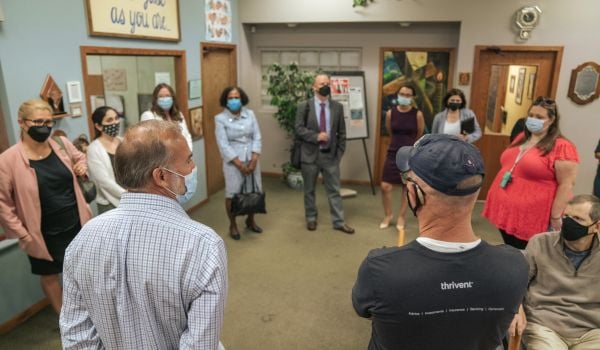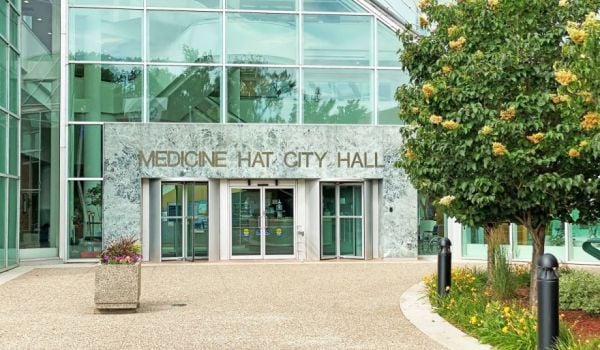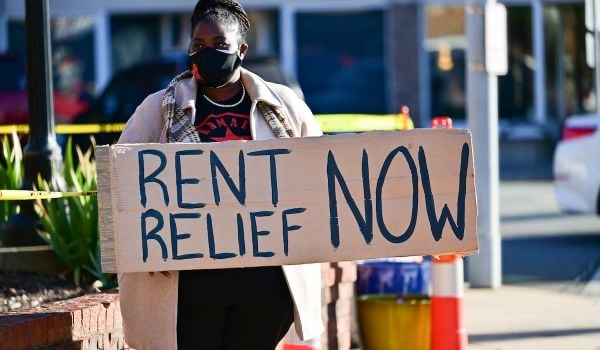In 1998, the mayors of many of Canada’s largest cities declared homelessness a natural disaster. As the problem grew, nearly a decade later, the Alberta provincial government gave seven cities in the province a total of $16 million to address the crisis.
Last year, in June, a small city in southeastern Alberta announced that it had become the first city in the country to “functionally end” chronic homelessness – meaning that there were no more than three individuals facing chronic homelessness in the city for three consecutive months. While the numbers have gone up and down since, the city has maintained its role as a Canadian leader in the battle against homelessness.
Located in the picturesque South Saskatchewan River Valley, Medicine Hat is known for its natural gas fields (it’s called the Gas City for a reason), dramatic coulees and rolling prairies. About 13% of residents live in poverty, and the opioid crisis has taken a toll on the community. The city’s total population: less than 63,300.
How did this small city reach the “functional zero” milestone? The city has worked to develop rapport with landlords, strengthen its housing loss prevention efforts, and move away from programs in favor of specific services to address vulnerable individuals’ needs, among other reforms. But officials say the core of Medicine Hat’s success is its data-driven, housing-first approach – where people experiencing homelessness are first provided housing without any preconditions, then offered support to address other issues they may face.
Check out Next City’s webinar on Medicine Hat’s housing-first strategy.
Putting Housing First
In 2009, Medicine Hat committed to ending homelessness, developing a five-year plan that sought to move the city’s approach from simply “managing” the homeless population to a housing-first philosophy, providing support to address individual issues and build self-reliance once housed. By 2015, Medicine Hat had actually declared itself at functional zero with homelessness based on its own standards, since no national definition existed at the time.
“We put housing first,” says Tracie Mutschler, executive director of McMan South, a nonprofit social services agency in Medicine Hat. “Ahead of mental health treatment, ahead of addictions. We do our best to get them housed. It is very difficult to do anything for a person with these issues unless they have permanent, stable housing.”
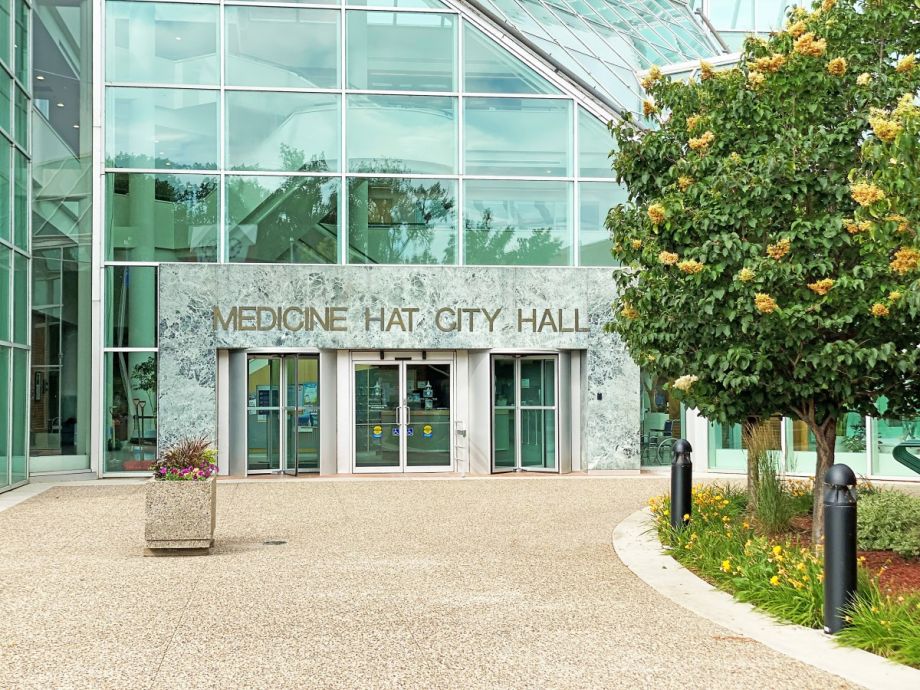
(Photo courtesy of Medicine Hat Community Housing Society)
People experiencing homelessness in Medicine Hat are not simply provided with a free space in a shelter or government-owned housing; last year, officials said shelter use had actually dropped by 64% overall since 2009. Instead, the city works with the individuals to secure affordable, permanent housing, which depending on their needs may be a private apartment, house, or even a long-term hotel room or a lot rental for an RV. They still have to pay rent, though they may find housing that is eligible for subsidies. This generally adds up to 30% of their income.
Since 2009, more than 1,675 people who were homeless or at-risk of being homeless have been housed in Medicine Hat, including more than 424 children.
Jaime Rogers serves as the manager of homeless and housing development for the Medicine Hat Community Housing Society, a role she has held for 11 years. The organization administers social and affordable housing for the government and leads the community’s plan to end homelessness.
“Homeless people have diverse needs,” Rogers says. “We start by finding out what their last successful permanent housing was and work from there. We then try to find housing that meets needs such as allowing for a pet, being affordable. Some things like a basement suite may not be suitable for someone who for any reason is sensitive to noise. We work around these issues.”
But a critical policy local agencies follow is freedom of choice: If some people refuse to be housed, then it is out of the agency’s hands. Indeed, since November of last year, the city is no longer at zero unhoused people. The number is now closer to 30.
By October of last year, officials had begun to see a resurgence in homelessness in the area, noting at least two homeless encampments in Medicine Hat. While there were spaces in shelters and permanent housing available, officials said some were opting to stay outdoors.
The city now says there are 40 individuals who are currently sleeping rough, as of this story’s publication. Of those, 17 are experiencing chronic homelessness. That’s a higher rate than Rogers has ever seen before in her role, she tells Next City.
“Sometimes there are people who are in active addiction or choose to not be housed,” Rogers says. “But we keep track of them and are always encouraging them to come in and try again. Starting conversations can be as simple as saying ‘hi’ each day and being persistent and engaging. We don’t just give up.”
Follow The Numbers
The policy Medicine Hat began with, and which other Canadian cities have since adopted, puts data collection at the center of all strategies. The city’s Homelessness Management Information System, implemented in 2009, includes a list of names of every individual experiencing homelessness in the jurisdiction (known as a by-name list). No one is reduced to a number, officials emphasize, despite the data-driven approach.
This data is part of Medicine Hat’s early coordinated entry system, a centralized assessment process through which officials can evaluate which services and housing needs individuals will need. “Our intake process is quite minimal,” Rogers explained in a webinar last year. “We don’t need a lot of information to make a good assessment. I don’t need to know about your childhood abuse if you’re homeless today and need housing.” Instead, they need to know about individuals’ housing history, if they have pets, if they’re residents of the community or are passing through.
By using this database, the city is able to track clients across agencies. One of the biggest benefits of this system is that agency workers can see their data in realtime, which allows them to monitor trends and improvements and share data across agencies such as shelters, hospitals and police. Every community-based organization in Medicine Hat participates in this coordinated access system, as do government services.
It also helps them plan for the future. “We look at labor trends, we look at housing trends, we look at migration patterns and influx,” Rogers said. “With Covid, it was the unemployment rate…we have to factor in six to eight months in advance to go, ‘What’s going to happen with their housing at that point?’ We have to factor in whether landlords are increasing their rent or not.” Putting real-time data in context with these community trends has been crucial.
Through analyzing this data, by 2017 the city was able to establish its baseline rate of chronic homelessness at seven individuals. (The city now has data on its chronic homelessness rates from 2009 onward, and is likely the only Canadian city to have numbers going back that far.)
By 2019, they had reduced Medicine Hat’s chronic homelessness by 10% below this baseline. After a few ups and downs, by March 2021 the city had reached three consecutive months with three or fewer individuals experiencing chronic homelessness – meeting the Canadian Alliance to End Homelessness’ and Built for Zero Canada’s newly developed standards for functionally ending chronic homelessness. That ended last year in November.
Clearly defining that end goal and rallying around it was critical to the effort. “Sometimes you have to create definitions and measure against those,” Rogers noted in the webinar. “If it doesn’t get measured, it doesn’t get done. And that has always been our drive to make change. If we wait for others to simply define things for us, we are missing great opportunities to actually influence that change…and really test it out.”
A Good Investment
City officials, including those championing the model today, were not always on board with the Housing First model. Rogers herself wasn’t sold on the idea. She first came across the idea in 2007, during a government-funded evaluation of innovative solutions to end homelessness. “At the time that housing-first was first implemented, I did not believe in housing-first,” she admitted in the webinar last year. “I thought it was such a simple approach and philosophy that it couldn’t possibly work. And obviously I was wrong. A lot of us were wrong.”
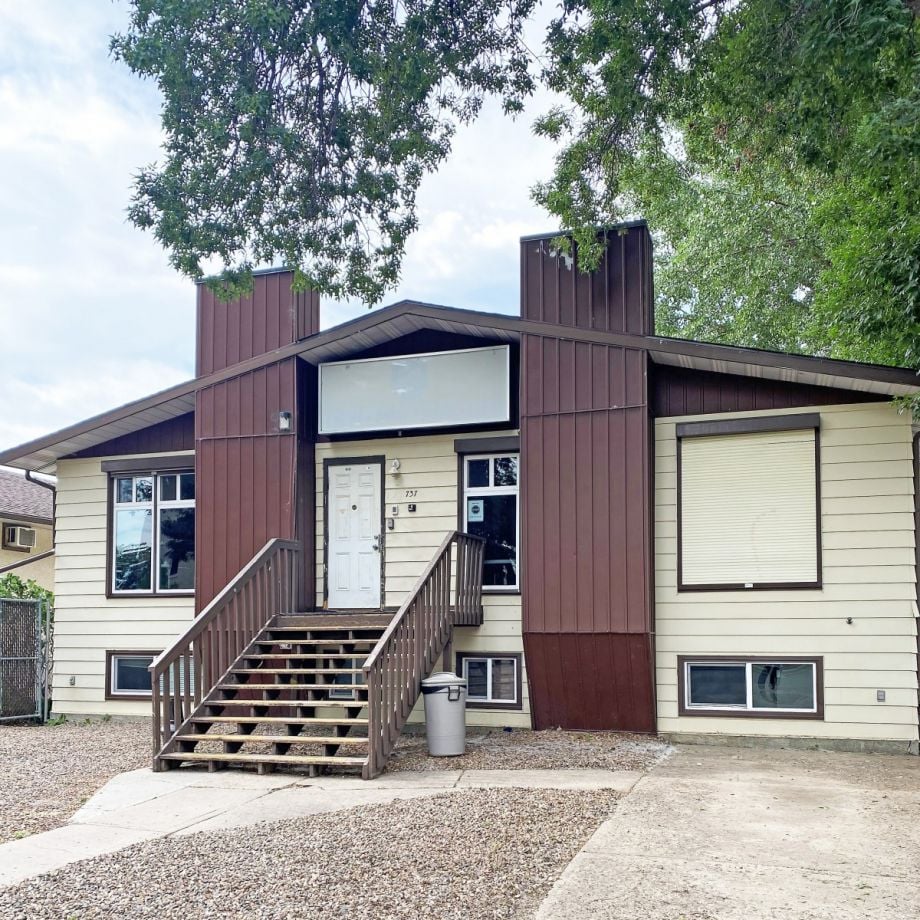
The Mustard Seed shelter in Medicine Hat (Photo courtesy of Medicine Hat Community Housing Society)
Former Mayor Ted Clugston, who championed the program during his tenure, is a strong believer in the city’s housing-first model, frequently touting its success. But in 2009, when he was still an alderman, Clugston actively opposed it. “I even said some dumb things like, ‘Why should they have granite countertops when I don’t?’” Clugston told CBC in 2015. “However, I’ve come around to realize that this makes financial sense.”
The city’s 2019 progress report found that while it costs Medicine Hat between $12,000-$34,000 annually per individual to provide housing and support, the cost of providing resources to people on the street can cost up to $120,000 a year per person.
Housing homeless people, researchers have repeatedly found, is not only recognizing their human worth and rights, but making an excellent investment. In British Columbia, the Nanaimo Homelessness Coalition estimates that people living with mental illnesses, addictions or disabilities, or who were even simply difficult to house, were costing the city on average $53,000 per year. But to properly house them would cost about $14,000-22,000 – potentially less than a third of the cost.
Since beginning their mandate to end homelessness, individuals who have entered Medicine Hat’s program have seen a 28% reduction in the number of days in hospitals and a 66% reduction of days spent in jail. Court appearances have jumped by 44%.
“All too often we have seen homeless people unable to deal with health or legal issues because of their situation,” Rogers says. “Now that they are housed, things don’t get to the critical stage before being dealt with.”
Can the success seen in Medicine Hat be repeated in Alberta’s larger cities of Edmonton and Calgary?
“We are working together with many Canadian cities, most of whom borrow from Medicine Hat’s approach, putting housing first and using a by-name database, for example,” Rogers tells Next City. “Though these cities are much larger, with different problems, we are quick to point out we accomplished our goal with one-eighth of the budget.”
Canada’s battle against homelessness is far from over. The Canadian government, currently led by the Liberal Party under Prime Minister Justin Trudeau, announced this year that housing is among its top three priorities. Minister of Finance Chrysta Freeland announced that one-third of all new spending in the 2022 budget will go to various programs intended to eliminate homelessness.
Critics say the party’s plan lacks clear direction and falls short of the promises laid out in the National Housing Strategy Act. Advocates say the plans do not comprehensively address the financialization of rental units, wherein housing is used as a vehicle for wealth and investment.
What the federal, provincial and municipal governments are doing is a good starting point, Rogers says, but they need to coordinate with each other and with local agencies working on the ground.
As it is, she says, they are still playing catch up.
RELATED WEBINAR
How A Small Town Answered Homelessness and Reached ‘Functional Zero’
Hear from Jaime Rogers, manager of the Homeless and Housing Development Department for the Medicine Hat Community Housing Society. Find out how Alberta’s Medicine Hat became the first city in Canada to reach functional zero chronic homelessness.
Aysha Khan contributed reporting to this story.
This article is part of Backyard, a newsletter exploring scalable solutions to make housing fairer, more affordable and more environmentally sustainable. Subscribe to our weekly Backyard newsletter.
Leif Gregersen is an author, teacher and public speaker living in Alberta, Canada, and specializing in mental health. He has published three books about mental health.
.(JavaScript must be enabled to view this email address)




